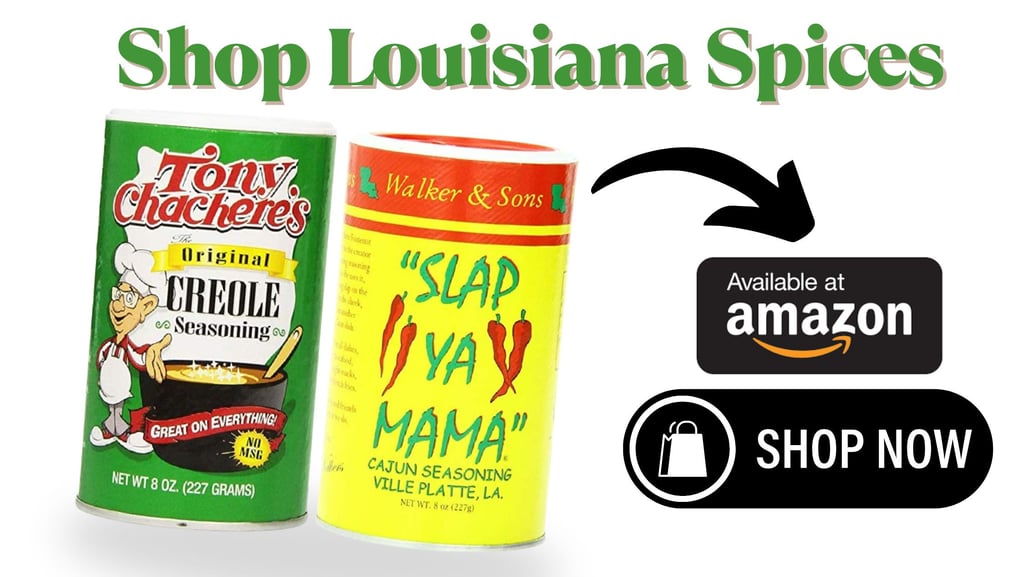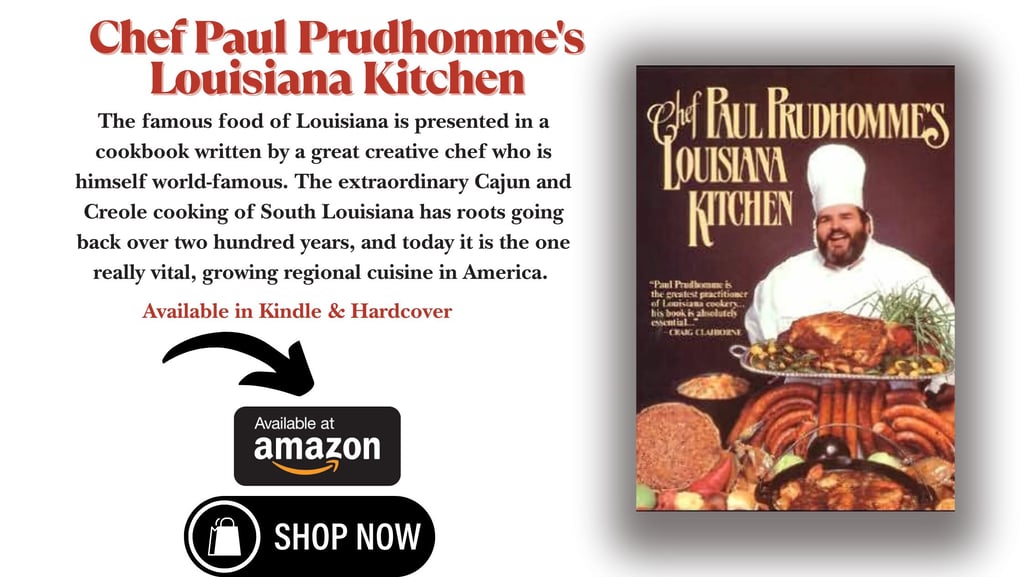Southern Spices: Louisiana Flavor Traditions, Recipes, and Cooking Tips
Taste the real Louisiana tradition with Southern Spices, featuring local recipes, time-honored cooking tips, and easy ways to boost everyday dishes.
KITCHEN TIPS & TECHNIQUES
Shari Smith
7/22/202512 min read
This post may contain affiliate links, and I may earn a commission if you choose to make a purchase through them.
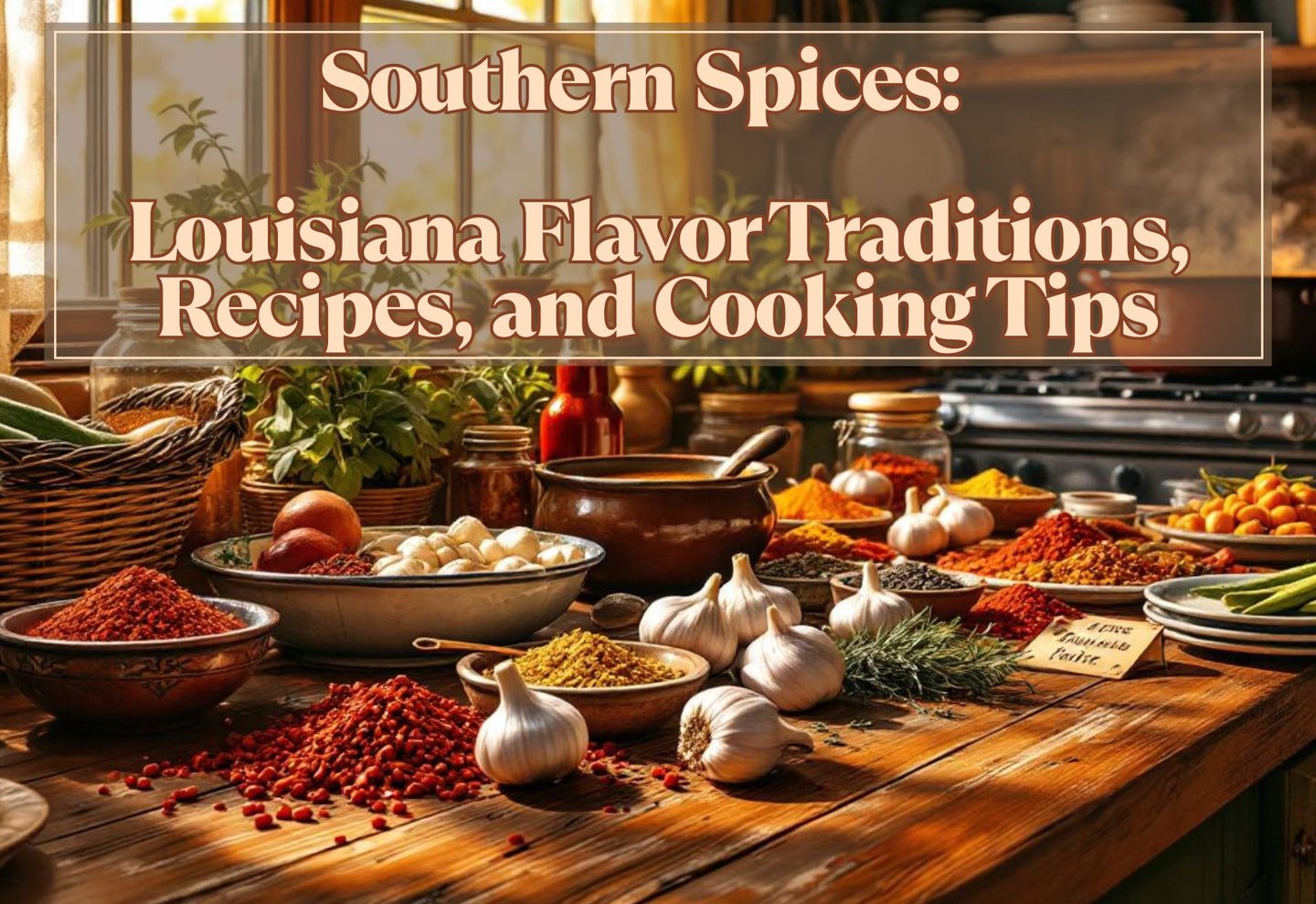

If you love bold flavors and crave a taste of true Southern cooking, southern spices are at the heart of what makes Louisiana food stand out.
From cayenne and paprika to garlic and thyme, these ingredients create the foundation for dishes that are rich, soulful, and unforgettable.
They're not just about heat or color—southern spices bring depth and personality to every pot of gumbo, étouffée, or jambalaya.
Louisiana's take on southern spices blends local traditions with French, African, and Spanish influences, giving the food its vibrant kick.
This post will guide you through the key spices, show you classic Louisiana blends, and share real tips for cooking at home.
Whether you’re new to these flavors or looking to sharpen your kitchen skills, you’ll find everything you need to start spicing up your next meal.
The Roots of Southern Spices in Culinary History
To really taste Louisiana, you have to start by understanding where southern spices come from and what makes them unique.
It’s not just about what grows in the backyard.
The history of Louisiana flavors is a mix of global trade, local farming, old traditions, and new ideas that came together in the kitchens and markets of the South.
Knowing the roots of southern spices helps us see why dishes like gumbo and jambalaya carry layers of taste in every bite.
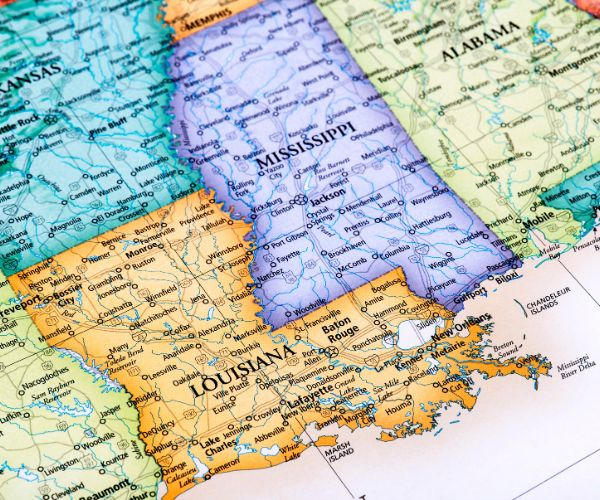

Origins and Global Influences on Louisiana Spices
The story of Louisiana’s southern spices is shaped by centuries of travelers and settlers.
French colonists brought herbs like thyme and bay leaf, while African cooks introduced bold spices such as cayenne and hot peppers. Spanish settlers added smoked paprika and influenced how people used garlic.
The state’s access to the Gulf of Mexico meant spice traders and ships from the Caribbean and beyond could dock at its ports, bringing pepper, allspice, and cinnamon.
Here’s a quick snapshot of global roots behind popular Louisiana spices:
Cayenne pepper: Originally from Central and South America. Brought to the state by trade with the Caribbean.
Paprika: Inspired by the Spanish, this spice adds color and mild flavor.
Garlic: A favorite from both French and Spanish kitchens, now a must in almost every Cajun or Creole dish.
Thyme and bay leaf: French influence, responsible for those deep, earthy notes.
Filé (ground sassafras leaves): Used by Native Americans and adopted into Creole soups and gumbos.
Over time, cooks in Louisiana blended these imports with what grew wild or could be farmed nearby, creating a flavor profile with both international and homegrown depth.
Southern Spice Trade and Local Sourcing
The movement of spices into Louisiana did not stop at the port. As people settled in southern Louisiana, farmers and foragers began to grow, dry, and sell spices locally.
The region’s humid, warm climate offered the perfect environment for growing herbs like parsley, sassafras, and hot peppers.
Many southern spices found in family kitchens today came from trading posts along the Mississippi River or from bustling French Market stalls in New Orleans.
Here’s how southern sourcing shapes the spice cabinet:
Backyard Gardens: Families commonly grow green onions, thyme, parsley, and peppers near their homes.
Markets and Trading Posts: Farmers and spice vendors supply everything from filé powder to bunches of fresh herbs.
Wild Foraging: Bay leaves and sassafras often come from native Louisiana trees and plants.
Community Knowledge: Recipes and growing tips get passed down, linking locals to both their land and their traditions.
Southern spices in Louisiana kitchens are the result of trade, migration, and generations of local know-how. Each jar or handful of spice tells a story that connects Cajun and Creole food to its rich, multicultural past.
Essential Southern Spices in Louisiana Cuisine
When you think of Louisiana cooking, it’s the signature blend of southern spices that gives each bite its bold character.
These aren’t just pantry staples, they are the real drivers of flavor that make Cajun and Creole food a standout.
Each spice plays a clear role, from heat to depth and even a bit of sweetness.
Let’s break down some of the most important spices behind iconic Louisiana dishes and see what makes each one special.
Cayenne Pepper: The Heart of Louisiana Heat
Cayenne pepper sits at the center of most Louisiana kitchens.
Known for its sharp, lingering heat, it wakes up everything from gumbo to crawfish boils.
You’ll find it in both Cajun and Creole recipes where a little goes a long way.
Why it matters: Cayenne brings steady, bright heat without overpowering the other flavors.
How it’s used: Sprinkled during cooking or added as a finishing touch. Some cooks add a pinch, others drop in a whole teaspoon.
Where you’ll taste it: Jambalaya, blackened fish, and spicy meats all get that signature kick from cayenne.
For anyone trying southern spices for the first time, start slow—this spice can ramp up quickly.
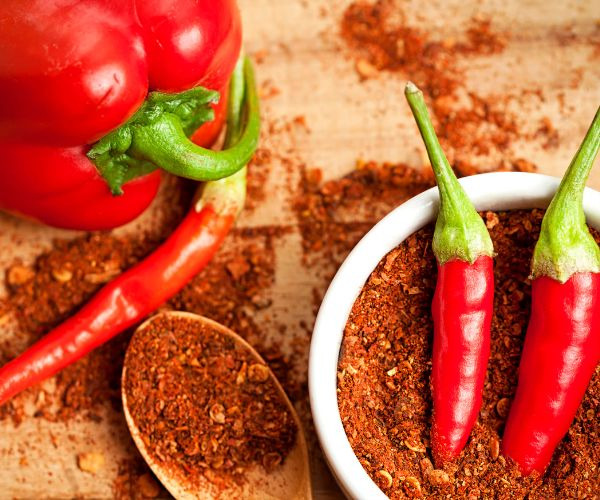

Paprika, Garlic Powder, and Onion Powder: Building Flavor Foundations
Behind every bold dish is a trio that forms the backbone of Louisiana flavor: paprika, garlic powder, and onion powder.
These bring more than seasoning—they build the taste structure from the ground up.
Paprika: Adds gentle warmth and bright color. It’s not just pretty, it offers a mild sweetness.
Garlic Powder: Cuts through richness and brings a depth that fresh garlic alone can’t match. It’s a must in dry rubs and seasoning blends.
Onion Powder: Rounds out the savory profile, adding a background note that sticks with you after each bite.
Together, these southern spices are found in classic spice mixes—think Cajun or Creole seasoning blends pulled together in a single jar.
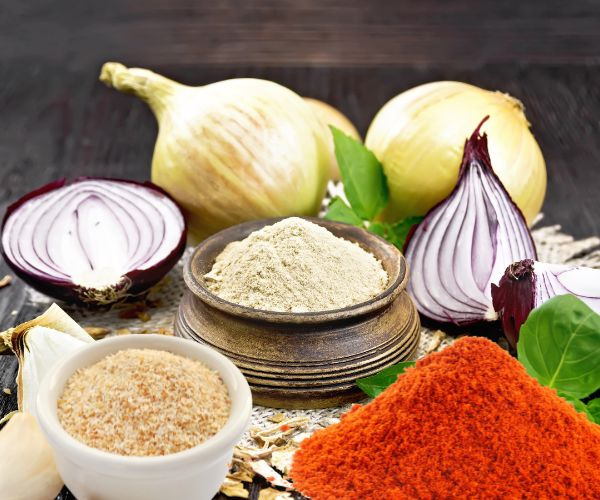

Black Pepper, White Pepper, and Their Distinct Uses
Louisiana food calls for both black and white pepper, and each offers something a little different.
Using both isn’t just tradition—it’s smart cooking.
Black Pepper: Brings sharp, robust flavor, a bit of heat, and a familiar bite. It’s common across the board—on meats, seafood, and into the pot for gumbo.
White Pepper: Has a cleaner, more subtle heat and blends in without changing the look of creamy or light dishes. Chefs use it to season étouffée or creamy Louisiana sauces when black flecks aren’t wanted.
This dual use lets cooks control both flavor and appearance. Trying both in your next dish will show just how layered southern spices can be.
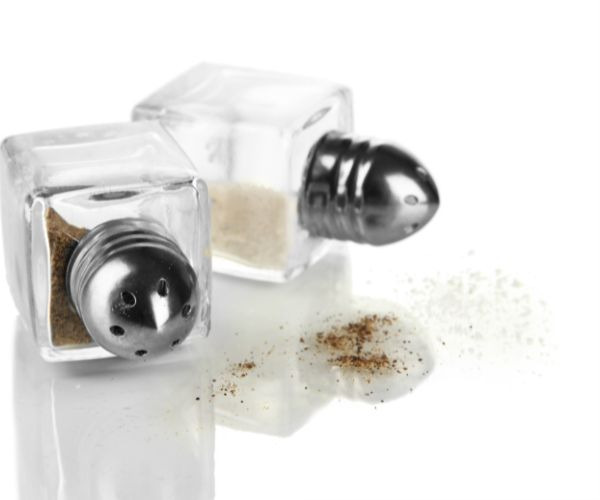

Bay Leaves: The Signature Herb of Cajun and Creole Dishes
Bay leaves grow thick on native Louisiana trees and have become a pillar in the region’s kitchens.
The leaf itself may not look special, but it unlocks a world of deeper, earthier notes as it simmers.
How it works: Bay leaf gives a faint floral scent and a background bitterness that balances rich, heavy food.
Signature uses: Tossed whole into gumbos, stews, red beans, and rice—then always removed before serving.
Why cooks rely on it: The taste is subtle but unmissable, working in the background to tie everything together.
Without a bay leaf, gumbo or Creole stew just doesn’t taste right—that’s how important this herb is to southern spices in Louisiana cuisine.

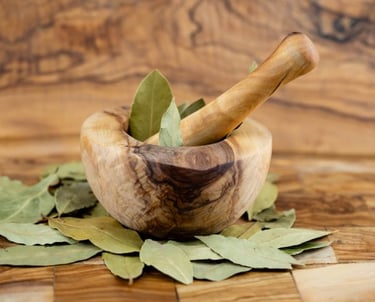
Traditional Louisiana Spice Blends and How to Make Them
The backbone of Louisiana’s famous food isn’t just one spice—it's the way cooks blend southern spices into powerful seasoning mixes.
Go to any kitchen in the state, and you’ll find hand-mixed spices in glass jars, ready to sprinkle into a pot of beans, dust over catfish, or shake onto a boiling crawfish tray.
Learning how these classic blends are built helps you bring real Louisiana flavor home. Let's explore the secret behind two of the most famous blends: Cajun and Creole.
Classic Cajun Seasoning: Key Ingredients and DIY Recipe
Cajun seasoning is bold, warm, and earthy. It’s what gives fried chicken, blackened fish, and gumbo their signature bite. This blend grew from farm kitchens, where families relied on simple pantry spices with big flavor.
Every Cajun cook has a personal recipe, but most Cajun blends include:
Paprika for smokiness and color
Cayenne pepper for strong heat
Garlic powder for deep savory taste
Onion powder for roundness
Dried oregano and thyme for a green, herbal lift
Salt and black pepper for punch and balance
Want to make your own? Mix up this simple Cajun seasoning at home:
DIY Cajun Seasoning Recipe:
2 tablespoons paprika
1 tablespoon garlic powder
1 tablespoon onion powder
1 tablespoon dried oregano
1 tablespoon dried thyme
1 teaspoon cayenne pepper (adjust for heat)
1 teaspoon black pepper
1 teaspoon salt
Stir the spices together in a bowl. Store in an airtight jar. Sprinkle it on everything from roasted potatoes to barbecue shrimp for an instant Louisiana kick.
Cajun blends use southern spices in layers. Start with just a dusting, taste as you cook, and add more for a deeper flavor. There's no one "right" combination, so tweaking your batch is encouraged.
Creole Seasoning: Unique Flavors and Blending Technique
Creole seasoning has a different flair. It’s built from the French-influenced city kitchens of New Orleans and leans a bit softer but more complex than Cajun blends.
Creole seasoning includes traditional southern spices, but also adds herbs and a touch of sweetness for a balanced taste.
Creole seasoning highlights:
Paprika and cayenne for basic fire and color
Black and white pepper for double sharpness
Garlic and onion powder for the savory backbone
Dried basil and oregano for a fragrant twist
Thyme, parsley, and sometimes celery seed for fresher, garden notes
A pinch of sugar in some recipes, to round off the heat
If you want to make a homemade Creole seasoning, try this easy mix:
DIY Creole Seasoning Recipe:
2 tablespoons paprika
1 tablespoon dried thyme
1 tablespoon dried basil
1 tablespoon dried oregano
1 tablespoon garlic powder
1 tablespoon onion powder
1 teaspoon black pepper
1 teaspoon white pepper
1 teaspoon cayenne pepper
1 teaspoon salt
(Optional) ½ teaspoon sugar or celery seed
Mix well and store in a sealed jar. Creole blends taste great on baked chicken, seafood, or stirred into stews and sauces.
What sets Creole blends apart is the careful balance. You won’t find overpowering heat, but you will taste each layer—herbs, sweet notes, pepper, and depth.
This gentle mixing style honors the blend of cultures in Louisiana food: French, Spanish, Caribbean, and local. Using these southern spices at home is a shortcut to building real Louisiana flavor in any dish.
Cooking with Southern Spices: Iconic Louisiana Dishes
Southern spices turn every classic Louisiana dish into something unforgettable. Whether it’s a bowl of gumbo or a plate of red beans and rice, the right blend of spices is what sets these meals apart.
Cooking with these seasonings goes beyond tossing in cayenne or paprika—it’s about building layers of flavor, balancing heat, and making each dish sing with rich, soulful notes.
Here’s how southern spices come alive in the state’s most iconic dishes.
Gumbo: Layers of Flavor from the Right Spices
Gumbo is the king of Louisiana comfort food. The foundation always starts with the "holy trinity"—onion, celery, and bell pepper—but southern spices bring it all together.
Every pot of gumbo tells a story through its spice lineup:
Cayenne pepper gives the dish its unmistakable heat. It’s spicy but doesn't overpower the whole pot.
Paprika adds warmth and helps deepen the color.
Bay leaf is essential for a subtle, earthy background flavor.
Thyme and oregano boost richness and add herbal notes.
Black and white pepper work together for sharpness and balance.
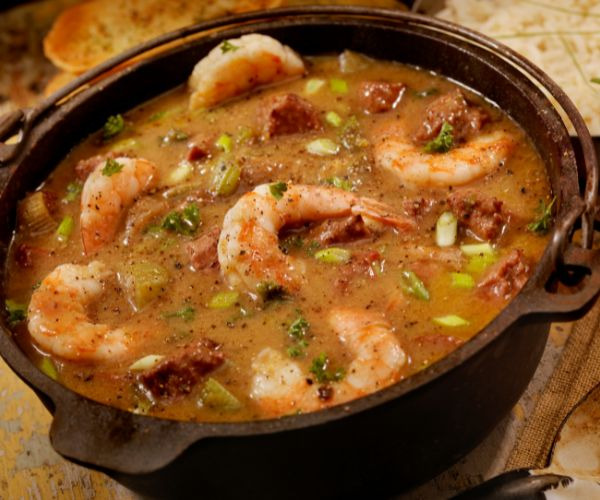

A great gumbo:
Starts with a well-blended roux (oil and flour cooked until dark)
Builds layers with each spice added at the right stage—never all at once
Lets the flavors develop as it simmers, often for hours
For a final touch, many cooks add a shake of filé powder (ground sassafras) just before serving for extra depth and to thicken the stew.
The careful mix of southern spices is why gumbo appeals to both first-timers and die-hard Louisiana food lovers.
Jambalaya: Balancing Heat and Herb Notes
Jambalaya is the perfect blend of rice, meat (often chicken and sausage), and spice.
It’s quick to whip up, but the secret is balancing spicy and herbal flavors using southern spices.
The typical spice mix for jambalaya includes:
Cayenne pepper for a steady punch of heat
Paprika, which brings color and mild sweetness
Thyme, oregano, and bay leaf offer garden-fresh, sharp flavors
Black pepper for a soft bite that rounds out the other spices

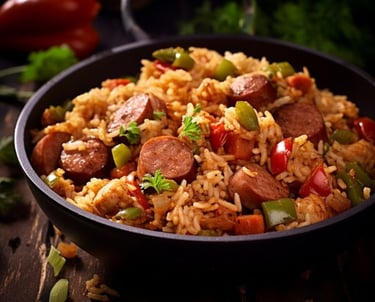
Many cooks:
Sauté their spices with the veggies and meat to bring out natural oils
Add a dried bay leaf with the broth so it can infuse as everything cooks
Sprinkle in some garlic or onion powder if the fresh versions aren’t strong enough
Getting the spices just right means the heat doesn't cover up everything else. Instead, you get bold, Southern flavor in every forkful that’s more than just spicy—it’s balanced and deep.
Etouffée and Red Beans & Rice: Spice Profiles and Tips
Étouffée (pronounced "ay-too-fay") and red beans & rice highlight the gentler, earthy sides of southern spices.
For étouffée:
Cayenne provides controlled heat
Thyme supports a grassy, herbal lift
Bay leaf and paprika round out the base
Many recipes add a touch of white pepper for soft warmth without black specks
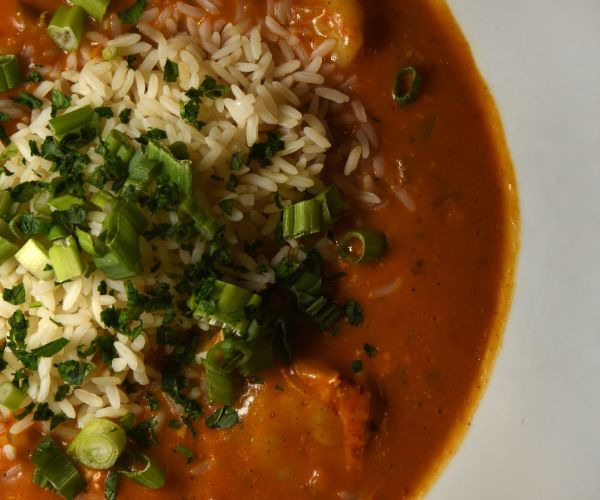

Shrimp or crawfish étouffée gets its depth from slowly building these spices into a buttery roux with onions, celery, and bell pepper.
For red beans & rice:
The mix starts with garlic, onion, and sometimes celery powder
Cayenne and black pepper create gentle heat that builds in the background
Bay leaf and thyme tie everything together while simmering for hours
A few seasoning tips:
Add the bulk of your spices early so they have time to meld
Taste as you cook—some prefer more heat, others lean toward savory or herbal notes
For extra depth, finish with chopped green onions or parsley
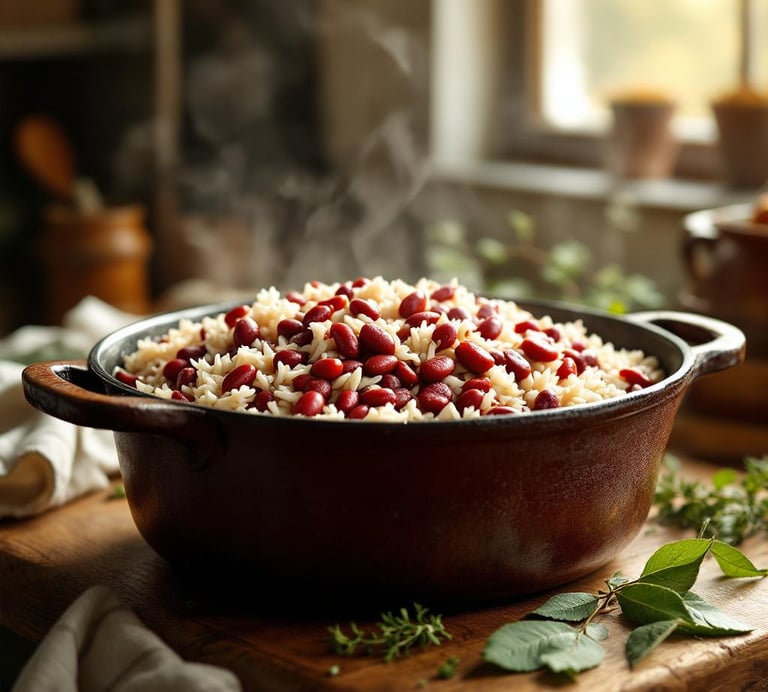

Etouffée and red beans & rice prove that you don’t need to load up on every spice in the pantry.
With just a handful of classic southern spices, these dishes earn their flavor through patience and balance, creating meals that taste like home.
Sourcing and Using Southern Spices Effectively
Spices are the backbone of Louisiana’s southern food. If you want that authentic taste, you need to start with bold, full-flavored seasonings.
Getting the freshest southern spices, storing them right, and knowing how to use them is the secret to making your cooking stand out.
Here’s how to bring out the best flavors in every meal, whether you’re sticking to old recipes or trying something new.
How to Choose the Freshest Southern Spices
Freshness makes a real difference in how your dishes taste. Spices that are old, faded, or losing their scent won't do justice to gumbo, jambalaya, or any Louisiana classic.
When you’re sourcing southern spices:
Go for vibrant color: Paprika should be bright red, not dull. Cayenne should be rich, not faded. Fresh color signals big flavor.
Smell before buying: Good spices should have a strong aroma. If you can’t smell anything, move on.
Try whole over ground: Whole black peppercorns or bay leaves keep their punch longer than ground versions.
Check from local sources: Farmers' markets, specialty shops, and even backyard gardens can offer fresher options than chain grocery stores.
Read the packaging date: Spices lose their strength fast, so check those dates. Pick the newest jar or bag on the shelf.
Feel the texture: Avoid clumpy powders or limp leaves—those are signs of moisture or age.
When you shop smart, your Louisiana dishes will have all the kick and soul they’re meant to deliver.
Using Southern Spices for Both Traditional and Modern Cooking
Southern spices can take you classic with gumbo or red beans and rice, or help you shake things up with new flavors and dishes.
For traditional Louisiana cooking:
Stick to classic blends: Use Cajun or Creole mixes to season chicken, seafood, or vegetables.
Build layers: Add spices at different stages—some when you sauté onions, some midway, and a quick sprinkle at the end to brighten things up.
Don’t overdress: Louisiana cooking is bold, but it’s about balance, not overpowering with heat.
For modern twists:
Experiment in new recipes: Try a dash of Cajun seasoning on grilled corn or filé powder in a stew that isn’t gumbo.
Mix cultures: Southern spices pair well with other flavors. Think jerk chicken with Cajun rub or southern-spiced roasted chickpeas.
Taste as you go: Southern spices are often hotter and more potent than you expect. Start light and adjust to your liking.
A flexible hand with spice lets you take southern flavor anywhere you want, from old-school Sunday meals to quick weeknight dinners or vegan and gluten-free options.
Good southern spices aren’t just for tradition—they’re for every cook who wants big, memorable flavor.
Conclusion
Southern spices are the heartbeat of Louisiana cooking, creating meals that feel both familiar and exciting. Whether it’s the heat of cayenne, the earthiness of bay leaves, or the aromas from homemade blends, these spices bring every dish to life.
Letting these flavors guide your recipes unlocks the real taste of the region’s food traditions.
Try building your own seasoning blends and use them in new ways at home. Add a pinch more here or mix something fresh there, letting your kitchen fill with bold southern spice scents. Great food starts with curiosity and good flavor.
Thanks for reading and supporting a tradition that keeps Louisiana’s southern food spices at the center of every good meal.
Southern Spice Homestyle Delights © 2025. All rights reserved.
Address
Rayville, La 71269
Want more from Southern Spice?


Get recipes, cooking inspiration, and exclusive information right to your inbox!
Categories

